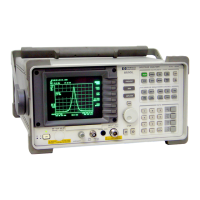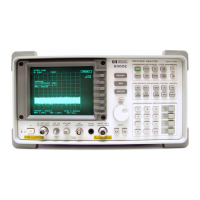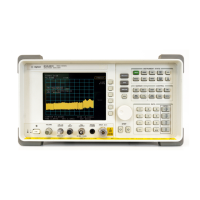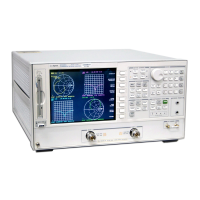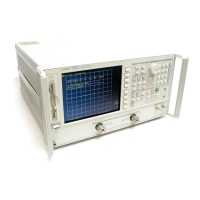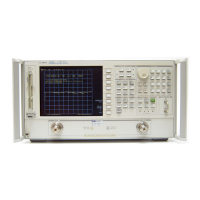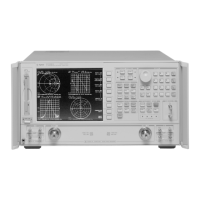To apply adaptive equalization
This task shows you how to apply adaptive equalization to the multi-path
signal that you demodulated in the previous task.
1. Perform the previous task.
2. Display the equalization-filter menu:
Press [
Instrument Mode
], [
demodulation setup
], [more].
3. Set equalization parameters for this measurement:
Press [
eq filt len
], 41 [sym].
Press the up or down arrow key until the convergence is 2e
– 6.
4. Configure the equalization filter to update with each measurement:
Press [
eq adapt run
].
5. Reset the equalization filter:
Press [
eq reset
].
6. Enable the equalization filter:
Press [
eq filter on
].
7. Restart the measurement:
Press [
Meas Restart
].
8. Autoscale traces A and B (the frequency response and impulse response of the
equalization filter) as the analyzer shapes the equalization-filter.
Press [A]
Press [
Shift], [B]
Press [
Auto Scale].
This example lets you watch as the analyzer shapes the equalization filter.
The analyzer estimates new filter coefficients with each measurement, and
then uses the new coefficients to adapt the filter for the next measurement.
By default, the equalization filter has a unit impulse response when the
analyzer is first turned on, if you press [Preset]or[eq reset], or if you change
instrument modes or [
points/symbol]. Aside from these conditions, the analyzer
uses the last computed coefficients when you enable equalization. For
example, if you used equalization in a previous measurement, the analyzer
uses the coefficients from the previous measurement unless you press
[
Preset]or[eq reset], or change instrument modes or [points/symbol]. Therefore, it
is good practice to press [
eq reset] to reset the filter coefficients before you
start a measurement.
Using Adaptive Equalization (Options AYA and AYH)
12-6
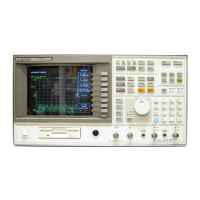
